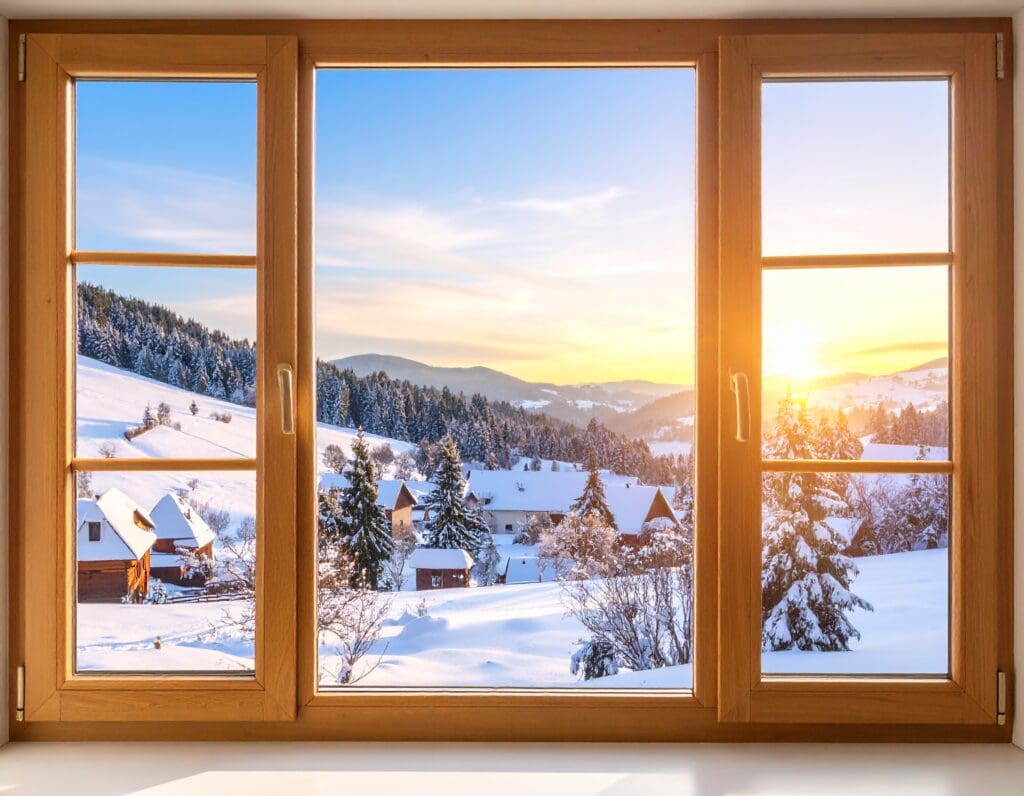In Romania, with its cold winters, hot summers, and a growing focus on energy efficiency, choosing the right type of window glazing can have a big impact on your home’s comfort, energy bills, and long-term value. For decades, traditional double glazing has been the standard. But a new, advanced option is now available: vacuum double glazing.
So, which type of glazing is the better choice for Romanian homes – especially those undergoing renovation, energy upgrades, or even listed building preservation?
Let’s explore how vacuum double glazing compares with traditional double glazing, and why more Romanian homeowners and architects are making the switch.

What Is Traditional Double Glazing?
Traditional double glazing consists of two panes of glass separated by a spacer filled with air or an inert gas like argon. It’s widely used across Romania – from apartment blocks in Bucharest to detached homes in Cluj or Brașov – and offers decent insulation compared to old single-pane windows.
However, its performance is limited by the thickness of the glass unit and the insulating power of the gas between the panes.
Typical U-values for traditional double glazing range from 1.1 to 2.8 W/m²K, depending on the quality and age of the unit.
What Is Vacuum Double Glazing?
Vacuum double glazing – also called vacuum insulated glazing (VIG) – uses two panes of glass with a vacuum between them instead of gas. Because vacuum is an excellent insulator, this technology provides superior thermal and acoustic performance in a much thinner unit.
One of the most advanced examples is LandVac, a high-performance vacuum glazing product that’s now available across Europe, including Romania.
Key benefits:
- U-values as low as 0.4 W/m²K
- Slim profile (as thin as 8.3 mm)
- Longer lifespan than traditional sealed units
- Ideal for historic buildings or modern passive homes
Why It Matters in Romania
🇷🇴 Energy Efficiency in Romanian Homes
Energy efficiency has become a major concern across Romania. With energy prices fluctuating and government incentives for home improvements, many homeowners are upgrading insulation and windows.
Vacuum double glazing offers 2–3x better insulation than standard double glazing. That means warmer rooms in winter, cooler interiors in summer, and significantly lower heating costs – especially in colder regions like Harghita, Suceava, or the Carpathian mountain zones.
Comparing Key Performance Areas
1. Thermal Insulation
- Vacuum double glazing: ~0.4 W/m²K
- Traditional double glazing: ~1.1–2.8 W/m²K
Lower U-values mean less heat loss in winter and less overheating in summer – a big advantage in Romania’s continental climate.
2. Noise Reduction
Vacuum glazing dramatically reduces noise due to the absence of air in the cavity. Perfect for urban areas like Bucharest, Iași, or Constanța, where traffic, trams, or nightlife can be disruptive.
3. Condensation Resistance
Romanian homes often deal with window condensation in colder months. Vacuum glazing practically eliminates interior condensation, improving indoor air quality and comfort.
4. Lifespan and Maintenance
Vacuum glazing units have a longer service life because they do not rely on gas, which can leak over time. Traditional sealed units typically need replacing every 15–20 years.
Aesthetics and Heritage Compatibility
Many Romanian towns and villages have historic buildings with narrow window frames – especially in Saxon towns like Sibiu, Sighișoara, or medieval areas of Brașov. Vacuum glazing is ideal for these homes because of its ultra-slim profile.
This allows window upgrades without altering the traditional appearance – something that’s crucial for heritage preservation and planning permissions.
Cost and Return on Investment
Yes, vacuum glazing can cost more initially than traditional double glazing. But the long-term value is clear:
- Lower energy bills
- Better durability
- Increased property value
- Greater comfort all year round
Plus, homeowners in Romania may be eligible for Casa Verde grants or EU funding schemes that support energy-efficient renovations. Choosing vacuum double glazing could help you qualify.
So, Which Is Better for Your Home?
If you’re renovating, upgrading for energy efficiency, or trying to preserve the character of a historic property, vacuum double glazing is the clear winner. It outperforms traditional double glazing in nearly every way – especially when it comes to thermal efficiency and design flexibility.
Traditional double glazing still has a place in low-budget or quick renovation projects, but for serious energy performance, acoustic comfort, and long-term savings, vacuum glazing is the smarter investment.
Discover LandVac Vacuum Glazing in Romania
Looking to future-proof your home with next-generation window technology?
LandVac vacuum double glazing is now available in Romania – combining ultra-high performance with a thin profile and exceptional durability.
👉 Contact us to learn more about vacuum double glazing solutions for your home, renovation project, or listed building.